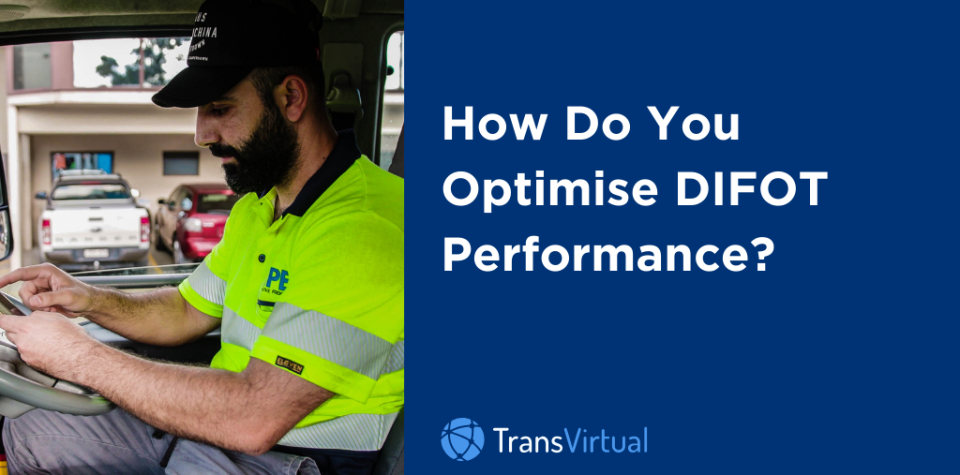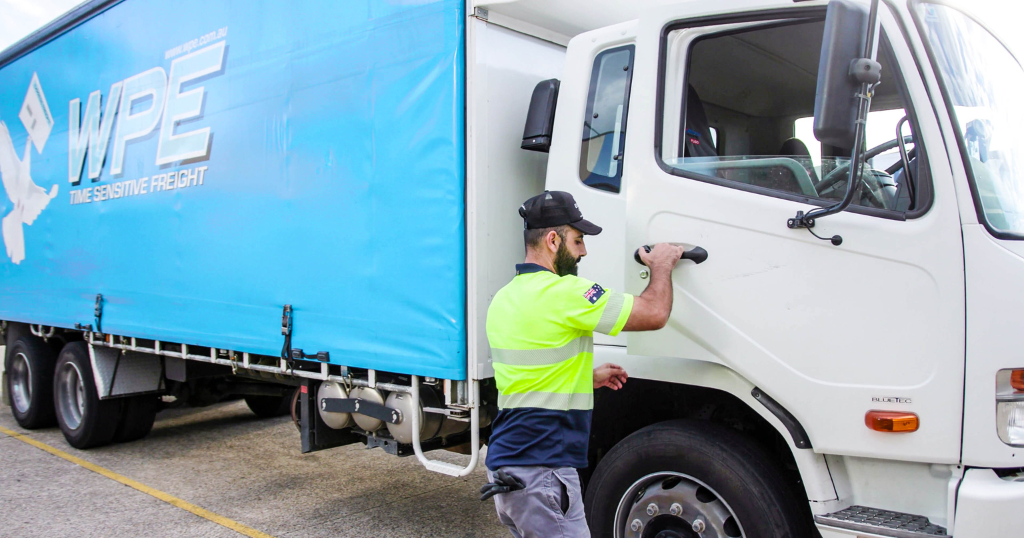Table of Contents
DIFOT: delivered in full and on time. Constantly hitting this target must feel like a true achievement!
It’s more than satisfying though, because there’s a lot riding on it. Customer satisfaction, winning repeat business, meeting your KPIs, and measuring delivery performance just to name a few.
But there are so many things companies struggle with when trying to meet their DIFOT targets. A few these include traffic, unplanned maintenance, a lost package. Even, a whole new pickup. Luckily, most things can be avoided or at least planned for so that your driver arrives exactly when expected.
In the supply chain, optimizing performance and measuring service levels are crucial for improving customer satisfaction.
As transport industry veterans, we’ve been around the block a few times. Today we’re rounding up our 5 best tips to help you meet your DIFOT targets.
First Off: What is DIFOT?
DIFOT stands for delivery in full, on time. We did a full, deep dive into DIFOT and how it impacts the shipping process. But to summarise, your DIFOT score is a performance metric used to measure two distinct factors:
a. Delivery in Full – meaning every item of an order was delivered and accepted by a customer.
b. On Time – as the name implies, denotes that the driver arrived on schedule.
To calculate DIFOT, simply divide the number of orders delivered in full and on time by the total number of orders and multiply by 100 to gain a percentage.
Let’s say in a month, a company had 200 orders scheduled for delivery.
-
Total Number of Orders: 200
-
Calculation: (160/200)x 100 = 80%
Out of these, 160 orders were delivered in full and on time (or 80% of products delivered were delivered in full, on time).
OTIF metrics is just another for DIFOT. The terms can be used interchangeably. Now, lets take discuss tips to ensure your deliveries are shipped on time and in full.
5 Tips to Meet and Exceed DIFOT Performance
Optimise your supply chain routes
Route optimisation is about two things.
Firstly, creating the most efficient route possible for your drivers. And secondly, being absolutely sure about meeting time windows and arriving at each doorstep on time, which is crucial for an effective delivery process.
More efficient routes help you deliver more packages, stick to prescribed time windows, and reduce costs.
Supply chain operations also benefit from optimised routes, as they ensure timely deliveries and improve overall efficiency.
Sounds great, doesn’t it? But route optimisation itself can be complex and time consuming.
To truly optimise a delivery route you need to factor in many things:
-
a driver’s workflow
-
the freight they have onboard
-
the order of their stops
-
the travel time between stops
-
the time taken to complete a pickup or delivery.
These are all impossible to trace manually. The right software, however, can take all of this into account and generate the best possible route for your drivers within moments.
Route optimisation then becomes an automated process and can save you hours every day. You’ll also reduce your costs and be reassured that you have accurate timing for your whole day.
Set time windows and give accurate ETAs for customer satisfaction
If there’s one certainty in the transport industry, it’s that something won’t go to plan in your day. Routes can change when a customer cancels a job, or adds one in last-minute, or when something goes wrong on the road.
So be sure to use a transport management system that allows you to change your schedule. Make sure you can add, delete or re-optimise routes on the run.
Within TransVirtual, once you’ve set up the best route, you can add the expected minimum and maximum transit times. Set up automated notifications too, so customers know what to expect. (You know those text messages that tell you when your new BBQ tool is expected to arrive.)
After you’ve set up your time windows, use route monitoring so you know when you need to update your ETAs and delivery date. That way everyone knows what to expect and you still meet your DIFOT targets.
Tracking the percentage of customer orders that are fulfilled successfully within the promised delivery window is essential for maintaining high DIFOT standards.
Monitor your routes to reduce human error
When things do change suddenly, route monitoring can be a lifesaver for improving DIFOT performance. Route monitoring is more sophisticated than basic GPS tracking, it tells you where your fleet is in the context of their runs.
So your dispatch team can see precise locations along with other important information, like:
-
the driver’s last stop
-
where they’re going next
-
new ETAs
It’s also incredibly useful to help your team who are fielding customer enquiries about the status of their package. Instead of getting contact details, making further calls and then returning the customer’s call, your team can see in real time exactly when and where that package is.
Human error, such as miscounting or misplacing part of an order, can significantly impact logistics operations and decrease DIFOT performance. Monitoring and addressing these issues is crucial for overall performance improvement.
And if things need to change, simply adjust it in the system. That way everyone knows exactly what is expected to arrive and when.
Build breaks into your day
The best planning doesn’t mean much if you don’t build breaks into your day. You will always need to take them at some point, so it makes sense to allow the time in the first place. All this can help improve DIFOT performance.
If you don’t have driver visibility, you’re not getting a true picture of what your workday should look like.
Besides travel time and stop time, you need to factor in rest stops. Drivers need to take a few minutes to stop at lunch, get out of their vehicle, stretch and get some fresh air. Doing this now and then can mean the difference between job satisfaction and burnout. No one’s working at peak efficiency and meeting DIFOT targets when they’re busy burning out.
It’s also important to include stops for fuel and vehicle maintenance. Nothing will delay your operations more than running out of fuel or breaking down because you haven’t taken time for important maintenance. Using a TMS like TransVirtual to automate your maintenance schedule will mean this part is mostly quick and easy.
Proper planning and meeting purchase requirements are crucial for customer retention. Once you’ve optimised your route and planned each stop, make sure you organise the freight in your vehicle accordingly.
Organise packages in your vehicle
Imagine, you’ve planned everything just right and arrived at the location right on time. But you can’t find the right package, highlighting a gap in your inventory management.
It seems obvious as you read, but it’s an easy step to miss. Packing your vehicle in the right order so that each package is ready exactly when you need it. For the best results, pack your vehicle after you’ve optimised your route.
Measuring supplier performance is also crucial for ensuring that orders are delivered on time and in the correct quantity.
A small delay at every stop or during every transit leg really adds up over the day.
Optimise and Monitor DIFOT Performance Today
Meeting your DIFOT targets means following a few strict processes in supply chain management. Optimise your routes so you know you have accurate ETAs, use route monitoring and be flexible when needed. Pack your vehicle in the right order, and be sure to build breaks into your day. Using an automated TMS like what we offer at TransVirtual makes all of this quick and easy. We’ll make sure you deliver in full and on time, every time.




